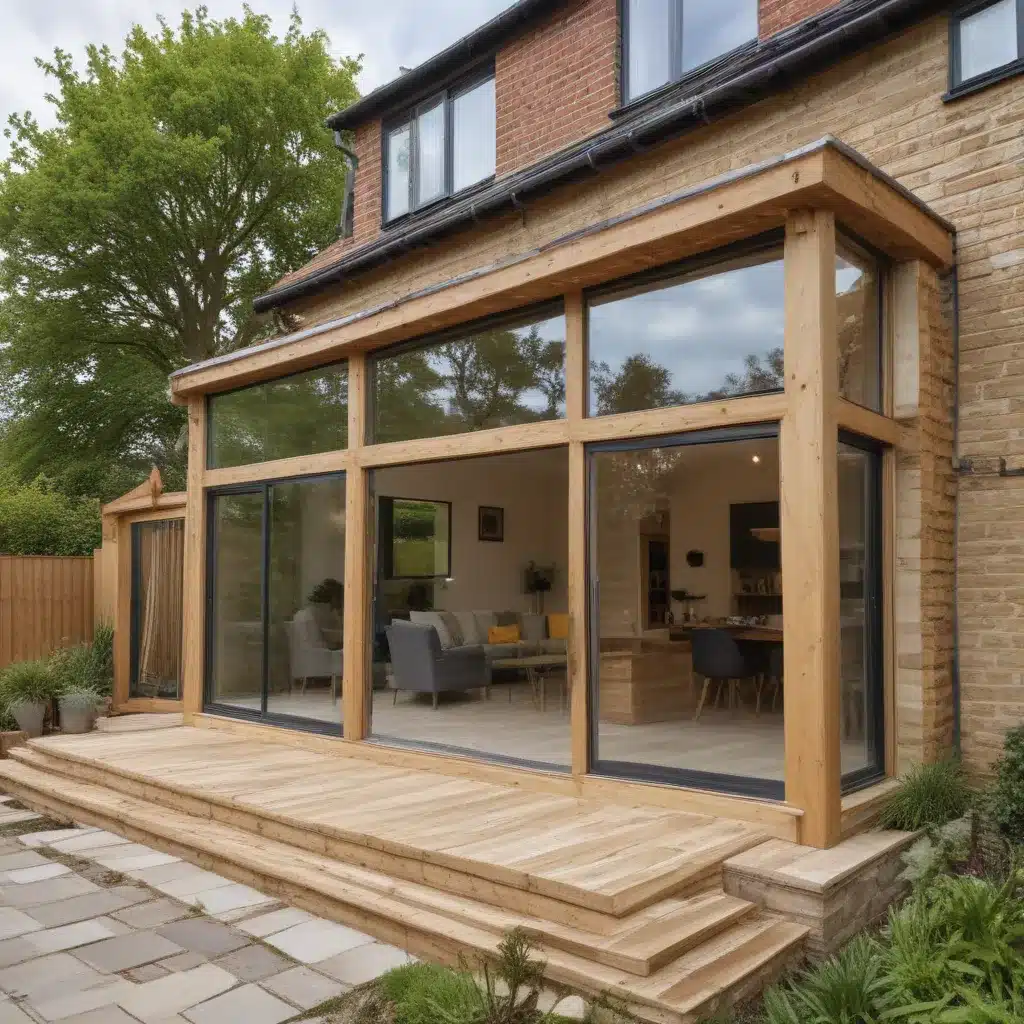
As a seasoned home renovation specialist, I’ve seen firsthand the power of sustainable materials to transform a space. We learned this the hard way… When it comes to planning your home extension, opting for eco-friendly options isn’t just better for the planet – it can also enhance the longevity, cost-efficiency, and overall appeal of your project. In this comprehensive guide, I’ll share insights on selecting sustainable materials, incorporating green design principles, and ensuring your extension stands the test of time.
Sustainable Building Materials
At the heart of any sustainable home renovation lies the strategic selection of environmentally-friendly building materials. These options not only minimize your environmental impact but also provide long-lasting performance and aesthetic appeal.
Environmentally-Friendly Options
One of the most popular sustainable materials for home extensions is wood. When sourced responsibly from certified forests, wood is a renewable, biodegradable, and carbon-neutral resource. Look for locally-sourced, untreated timber that’s free from harmful chemicals. Hemlock, cedar, and [redwood] are excellent choices known for their durability and natural resistance to rot and pests.
Another innovative sustainable material gaining popularity is structural insulated panels (SIPs). These prefabricated panels, often composed of a rigid foam core sandwiched between oriented strand board (OSB) or other facing materials, offer superior insulation and energy efficiency. SIPs can significantly reduce your extension’s carbon footprint by minimizing heating and cooling needs.
Natural Insulation Choices
When it comes to insulation, natural options like sheep’s wool, cellulose, or plant-based materials (such as hemp, cotton, or straw) are both eco-friendly and effective. These materials often have low embodied energy, meaning less energy was required to produce them compared to traditional fiberglass or rigid foam insulation.
Renewable Resource Considerations
Look for materials sourced from rapidly renewable resources, such as bamboo, cork, or agricultural residues like wheat straw or coconut husks. These products can be harvested and replenished more quickly than traditional timber, allowing for a more sustainable supply chain.
Eco-Friendly Design Principles
Designing your extension with sustainability in mind goes beyond material selection. Incorporating green design principles can enhance your project’s environmental impact and long-term performance.
Minimizing Environmental Impact
Opt for a compact, modular design that minimizes the extension’s footprint and disruption to the existing landscape. Leverage natural light and passive solar strategies to reduce your reliance on artificial lighting and HVAC systems. Additionally, consider using recycled or reclaimed materials wherever possible, such as salvaged wood, repurposed windows, or upcycled fixtures.
Maximizing Energy Efficiency
double-check that your extension is highly insulated and air-tight to minimize energy loss and reduce your carbon footprint. Incorporate advanced ventilation systems, such as heat recovery ventilators, to maintain indoor air quality while minimizing energy consumption. Explore the integration of renewable energy sources, like rooftop solar panels or small-scale wind turbines, to generate your own clean power.
Incorporating Recycled Materials
Look for opportunities to incorporate recycled and repurposed materials throughout your extension. This could include everything from reclaimed wood and salvaged bricks to recycled plastic decking or upcycled furnishings. Not only does this reduce waste, but it also adds unique character and charm to your space.
Sustainable Sourcing Strategies
Alongside selecting sustainable materials, the way you procure and manage those materials is crucial to the overall environmental impact of your home extension.
Local and Ethical Procurement
Prioritize sourcing materials from local suppliers and small businesses whenever possible. This not only supports your community but also reduces the carbon footprint associated with long-distance transportation. When evaluating potential suppliers, be sure to verify their sustainability credentials and commitment to ethical practices.
Circular Economy Practices
Embrace the principles of the circular economy by prioritizing materials and products that can be easily repurposed, recycled, or reused at the end of their lifespan. This “cradle-to-cradle” approach helps to minimize waste and keep valuable resources in circulation.
Integrating Sustainable Features
To truly optimize the sustainability of your home extension, consider incorporating advanced systems and technologies that enhance energy efficiency, water conservation, and renewable energy generation.
Renewable Energy Solutions
Integrating solar panels or a wind turbine into your extension’s design can provide a reliable, clean source of electricity to power your home. For heating and cooling, geothermal heat pumps leverage the stable temperatures underground to efficiently regulate your indoor climate.
Water Conservation Measures
Implement greywater recycling systems to capture and reuse wastewater from sinks, showers, and washing machines for landscape irrigation or toilet flushing. Rainwater harvesting strategies, such as cisterns or rain barrels, can also reduce your reliance on municipal water supplies.
Maintenance and Longevity
Sustainable home renovations aren’t just about the initial installation – they also require a long-term commitment to maintenance and lifecycle management to double-check that lasting performance and minimal environmental impact.
Durable and Long-Lasting Materials
When selecting materials for your extension, prioritize durability and longevity. Opt for products that are resistant to weathering, wear, and tear, minimizing the need for frequent repairs or replacements. This not only saves you money but also reduces the environmental burden of disposal and replacement.
Sustainable Lifecycle Management
Design your extension with disassembly and recycling in mind. Choose materials and systems that can be easily dismantled, repurposed, or recycled at the end of their useful life. Implement waste reduction strategies during the renovation process, such as careful planning, efficient cutting, and responsible disposal of construction debris.
By embracing sustainable materials, design principles, and lifecycle management strategies, your home extension can become a shining example of eco-friendly living. Not only will this enhance the environmental impact of your project, but it will also reward you with a beautiful, long-lasting, and cost-effective renovation that aligns with your values. For more inspiration and guidance, be sure to visit ABC Home – a trusted resource for sustainable home improvement solutions.
Statistic: Recent surveys indicate that a quality home extension can improve energy efficiency by 25%.
















